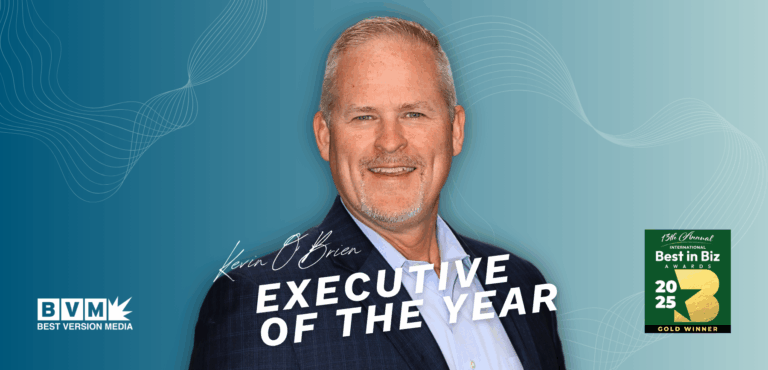Google Ads vs. Meta Ads: Which Should Be the Focus For Your Business?
June 10, 2025
Industry Trends
Digital advertising has continued to grow significantly in recent years. According to Statista, $7.50 of every $10 invested into advertising in the United States in 2024 was spent on digital ads, while the country had $317 billion of digital ad revenue overall.
When it comes to digital advertising, two platforms dominate the landscape: Meta Ads and Google Ads. Both platforms offer powerful tools to reach target audiences, helping businesses attract more customers while increasing online presence and brand loyalty.
However, each platform offers different benefits depending on the goals of a business, who it is targeting and its advertising budget. Here’s a closer look at both ad platforms and what mix might be best to utilize for your business.
Breaking Down the Benefits of Google Ads
Google Ads campaigns have proven that they can be incredibly valuable for a business. According to Statista, Google accounted for 25% of net digital ad revenue among digital ad publishers in the United States in 2024, leading the country by a wide margin.
Perhaps Google’s greatest benefit is its wide audience reach. Google Display Network reaches a collection of over 2 million websites, videos and apps where a company’s ads can appear. Sites within Google Display Network reach around 90% of internet users across the world.
Diverse ad placement is another benefit when it comes to Google Ads and is enhanced by the platform’s wide reach. For example, ads can be shown on high-traffic Google-owned properties like YouTube and Gmail, expanding reach beyond just Google Search. Display ads can also appear on a variety of news websites, various blogs and forums, and mobile apps and games.
Lastly, Google’s optimized targeting can put a business directly in front of consumers who remain in the research process. Through behavioral and contextual data such as search history, visits and interests, Google displays ads to the audience most likely to help conversion goals.
Breaking Down the Benefits of Meta Ads
In contrast to Google, Meta Ads are more often found by discovery. They are placed in front of potential consumers who likely aren’t initially searching for a particular product or service, but might be persuaded to make a purchase after seeing an ad. Even so, many users still claim that they are seeking out advertisements on social media, as a recent survey from Meta showed that 74% of people said they use the platform to discover brands or products online.
This is beneficial considering Meta’s sophisticated targeting ability, as the platform can pinpoint several signals, including demographics like age, gender and relationship status, behavioral data such as device usage and media consumption, and psychographic interests like hobbies or life events. With Meta’s niche targeting, businesses can craft more specific ad campaigns with lower wasted spend.
Meta Ads can also provide engaging storytelling through multiple media formats that can attract various audiences. Ranging from photo and video ads to carousel and collection ads, Meta has the potential to drive emotional connections while enhancing brand recognition.
More specifically, an ad on Facebook contains the company’s logo and can have a single picture, several pictures or a video. The ad appears within a user’s feed, and can be interacted with by clicking on any of the call-to-action (CTA) buttons around the ad. In 2024, Facebook ad traffic campaigns had a 1.57% click-through rate and a $0.77 cost per click, both up from 2023.
Meanwhile, running ads on Instagram has also proven effective, particularly among the younger population, as 44% of Gen Z consumers surveyed by Meta find information about products and brands on Instagram, while 79% of customers claim to have purchased a product or service after watching reels.
CTA buttons, including like, share or comment, allow for two-way engagement between the consumer and business. Video views, reactions and story interactions can lead to greater consumer engagement and provide more data for future ad optimization. Overall, Meta advertisers in the United States are making $3.31 in revenue on average per every $1 spent.
Potential Downfalls of Google Ads and Meta Ads
Despite the immense benefits both platforms can give businesses, there are a couple of potential drawbacks for each. When it comes to Google, ads are less interactive, as users can’t react or comment, potentially limiting immediate rapport between a business and consumers.
In addition, creative control is limited compared to Meta, while some consumers can also develop “banner blindness” if ads lack relevance or creativity. Google Ads are generally seen as more expensive than Meta Ads as well, with a median cost-per-click price of $1.66 compared to $0.29 for Meta, according to Agency Analytics.
With Meta Ads, declining organic reach can be an issue. As Meta’s algorithm tends to favor personal content over business posts, relevant ads can go unseen, often forcing smaller companies into paid reach in order to maintain consistent visibility.
Unlike Google, users on Facebook and Instagram are typically scrolling for entertainment and not necessarily seeking out a business. This could ultimately lead to lower conversion rates on these platforms.
Success Stories of Google Ads and Meta Ads
Several success stories have been seen in recent years by businesses that have implemented ads on both platforms.
Furniture store IKEA turned to Google Ads to boost return on ad spend while driving more traffic to stores. By ensuring that users within a specific distance of a store would be delivered a search ad, IKEA saw a 38% lower cost per click, a 232% increase in physical store visits, a 117% increase in sales and a 68% increase in return on ad spend.
Rakuten, formerly known as Ebates, used Google Ads as it underwent a brand overhaul several years ago. Using a multichannel ad strategy between search and YouTube, Rakuten saw a 74% increase in conversions.
Additional Google Ads success stories can be found here.
With Meta Ads, Rothy’s, a shoe company, has used Facebook video ads to increase sales and shoppers by 72%. The business has also seen a 37% increase in brand awareness.
Lulus, a women’s clothing company, has utilized Meta’s Advantage+ shopping campaign to give it a 47% increase in return on ad spend, while reducing cost per purchase by 29% and cost per impression by over 7%.
Additional success stories stemming from Meta Ads can be found here.
Which Platform is the Best Choice For Your Business?
Advertising through both Google Ads and Meta Ads is often the best approach if a business can afford it, with each platform offering unique benefits that can greatly increase visibility and lead to more conversions. Ultimately, it comes down to what product or service your business offers, and what you are aiming to accomplish within your marketing strategy. Your competition, budget and current online presence can all play a role in choosing how to utilize each platform.
Google Ads provides businesses with a more broad, but significantly large reach, and can retarget users who show interest in your company. Consumers often have a higher intent to purchase a product or utilize a service on a search engine, potentially strengthening brand awareness as well.
Meta Ads are more beneficial for targeting specific demographics or niche audiences. Meta also gives businesses the opportunity to create visually appealing ads in different formats, and the interactability of those ads can help increase brand loyalty while giving businesses insights that can be implemented in future advertising campaigns.
Best Version Media Can Boost Your Business Through Both Ad Platforms
Best Version Media can help complement the marketing efforts of your business through management of online ad campaigns, offering various tools to increase your visibility and online presence. By managing 13,000+ digital ad campaigns that create over 300 million monthly impressions, BVM has helped local businesses throughout North America grow while fostering consumer loyalty.
With Google Ads, BVM can help your local business reach an audience across millions of websites and apps. Through geotargeting and optimizing ad campaigns, companies will become more visible and be able to connect with local customers, all while driving brand awareness and website traffic.
Similarly, BVM’s management of Meta Ads can connect your business with millions of people across powerful social media platforms like Facebook and Instagram, showcasing products and services to a local community in a simple and cost-effective manner.
With multiple tiers of display ad campaign bundles that can help boost your online presence, connect with BVM today to create a digital ad strategy that is right for your business.





